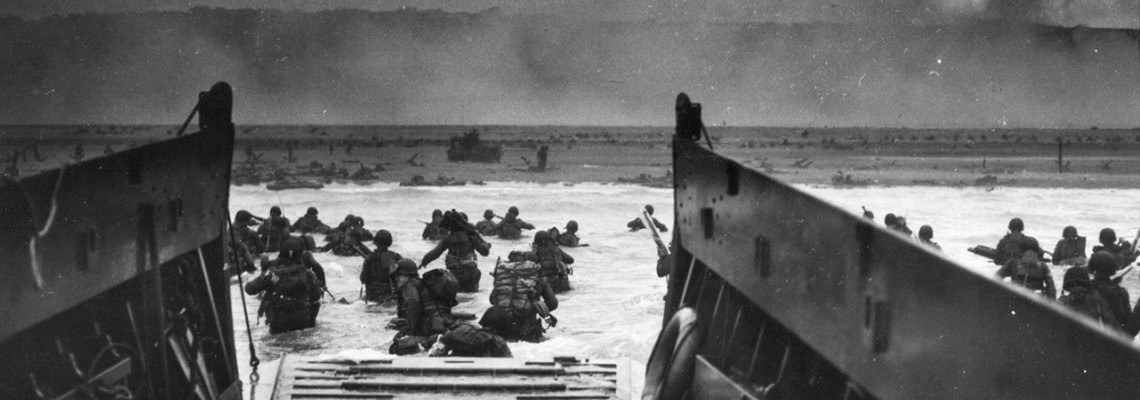
Omaha Beach
Omaha Beach
Rear Admiral John L. Hall, USN, led Task Force 124, for the assault on Omaha Beach (five miles between Port-en-Bessin and the Vire River) on board USS Ancon (AGC-4). The assault force consisted of minesweeper, assault, escort, bombardment, and shore-party groups. Commanding the U.S. Army's 1st Division and 29th Infantry Division was General Clarence R. Huebner, USA. At H-Hour, 06:30, starting with landing difficulties, the troops landed with a second wave coming a half-hour later. The code-name for the beaches were: Charlie; Dog Green; Dog White; Dog Red; Easy Green; Easy White; Easy Red; Fox Green; Fox White; and Fox Red. At the beaches, following wading through tide-water, the men were met with extreme gun fire, rough terrain, runnels, mined-obstacles, French galets (pebbles), concertina barbed wire, and seawalls. This journey continued with being exposed in a grassy area with no cover, whilst still under extreme fire, which was then met with a climb riddled with numerous bluffs and eroded ravines. Ranging from 5000 to 7000 yards from shore, nine U.S. Navy destroyers along with three Royal Navy Hunt-class destroyers provided gunfire support, with USS Baldwin (DD-624) being the only U.S. Navy ship that received distinct damage by the enemy. By noon, the first Germans were coming out of their positions to surrender. At the end of the day, the brave and valorous men reached a mile-and-half inland.
Image: 26-G-2343: Normandy Invasion, June 1944. U.S. Army troops wade ashore on "Omaha" Beach during the "D-Day" landings, June 6, 1944. Official U.S. Coast Guard Photograph, now in the collections of the National Archives.



